-
Content count
287 -
Joined
-
Last visited
Posts posted by -bijanto-
-
-
I don't know if this is called telepathy but I have a personal experience.
About ten years ago I had a girlfriend. She was a cheerful, normal girl with a good sense of humour. But one day I was amazed when I found out that she's unique, in that it seemed she has a sixth sense or something like that.
It began when we played mastermind - you know the board game with code pegs of six different colours? I almost couldn't believe it as she always guessed the right pattern at the first turn, no matter how many times we repeated the game. At that very moment I began to think that this kind of thing was not a coincidence.
Next, I asked her to sit about 5 meters from where I was, I took a piece of paper and started to write any random words that crossed my mind at that very moment, like names of city, country, my friend, family etc. I knew exactly that she didn't see or cheat. But she always knew what I was writing there.
Then I moved to a different room and took a piece of thing and put it into my pocket. Then I asked her, "Now, what is it I'm putting in my pocket?" She answered correctly from the other room, every time I grabbed anything else from that room.
I tried to get some explanation from her, but she couldn't explain it herself. The only thing she told me was: "I don't know how, but I can see colours".
Then I had a conversation with her parents. They told me that it had happened since she was a child. Many times she saw some weird appearance such as a white human-like shadow walking (or flying) quickly across the room, or a group of people sitting or standing around a place where people died in the past, such as in a cemetary, location of a past deadly-car-accident etc. And the weirdest thing was that one day when she was ten years old, she told her parents that her uncle was dead. Actually his uncle was on a car riding to another town that morning, and later that night, they received a phone call from a hospital, saying that the uncle died of a car accident.
A couple of weeks later I forgot where I put my motorbike key so I spent almost an hour searching for it until I found it in one of the rooms in her house, yet she kept saying that she honestly didn't have any idea where the key was. It was one of the funniest moment in my life.
Weird, but it happens.
-
Be careful of excessive betelnut. As much as 2 mg of arecoline can have strong stimulating effects, so should not take more than 5 mg at once. Taken in powdered form, it should not be more than 4 grams. In long term, arecoline overdose may cause decreased cell's ability to live and reduced DNA & protein synthesis speed. Arecoline may also cause depletion of beneficial glutathione enzyme.
Betelnut seed also contain relatively high amount of phenolic compunds - which are toxic. During the chewing process in the mouth, reactive oxygen species (free radicals) may form and this reactive oxygen species is responsible for the DNA damage of ephitelial cells in the mouth. The damage may develop into oral submucous fibrosis (OSF), a pre-cancerous condition.
Other dangerous compounds in betelnut seeds are N-nitroso derivatives, ie N-nitrosoguvakolina, N-nitrosoguvasina, etc. These nitroso derivatives may cause tumour in pancreas, lungs, nose, and liver.
The use of betelnut seed together with flupentixol and salbutamol may cause tremor effects, akithesia (the urge to move), asthma or alergy. Flupentixol is used to treat mild to moderate depression, and salbutamol is is usually sold as a cure for asthma. They may come under different brand names.
-
In Indonesia, there are 3 worms that mostly infect human body through the soil, ie Large Roundworm or Cacing Gelang (Ascaris lumbricoides), Whipworm or Cacing Cambuk (Trichuris trichiura), and the Hookworm (Cacing kait or Cacing Tambang, which in Indonesia is mostly Necator americanus). There is also the Pinworm or Cacing Kremi (Enterobius vermicularis) that infects human from the air, and Tapeworms (such as Taenia solium etc).
Anthelmintic properties of betelnut seeds has been performed in vitro (in a synthetic media) against tapeworms that are usually found in local dogs and pigs.
As a comparison, modern drug "pirantel pamoat" has been used in the experiment. The dose was 15 mg of powdered betelnut seeds in 25 cc of distilled water and 1mg of pirantel pamoat powder in 1.000 cc of distilled water.
After soaking period of one hour, 18 worms in betelnut solution are found dead, whereas none in the pirantel pamoat solution has been killed yet. After 4 hours of soaking period, the number of worms found dead is almost the same in both solutions. All worms in both solutions are dead after 10 hours of soaking period.
In another experimentation, betelnut seed is compared with mebendazol, this time in vivo, i.e. using an experiment dog that is infected with the larva of tapeworms. The result is, though not as effective as mebendazol, betelnut seed solution can reduce the number of worm eggs as much as 74,3 % while mebendazol can reduce the number of egg as high as 83 %.
However, the above experiments have not yet been applied to human.
The Natives of Javanese and Balinese use to combine rhizomes of Curcuma aeruginosa and Zingiber purpureum as well as Piper betle leaves in their traditional medicinal plant recipes against worms. Here's one famous recipes:
Ingredients:
- 25 gr of "Temu Ireng" rhizome (Curcuma aeruginosa)
- 15 gr of "Banggele" rhizome (Zingiber purpureum)
- 5 Betel leaves (Piper betle)
- 5 Ketumbar (Corriander) seeds
Grind all the above ingredients and stir in a half cup of boiling water, let it cool, strain, add 4 grams of powdered betelnut seeds and drink the solution.
All the above ingredients should be easily found in traditional markets in Bali.
Note:
- Another in vitro experiment also shows that Ascaris lumbricoides eggs are significantly reduced by soaking in solution of papaya (Carica papaya) seed extract. Local people also reports that papaya seeds are also effective against tapeworms. Traditional methjod is by using ground seeds as follows:
Dry 1 bowl of papaya seeds, grind well. Mix with 1 bowl of milk or water. Dose (for adult): 1 tsp per day, taken about 2 hours after dinner.
- In vitro anthelmintic activity against Ascaridia galli worm has been documented for the volatile oil of Zingiber purpureum.
- Rhizome of Temu Giring (Curcuma heyneana) and seeds of Ceguk (Rangoon Creeper, Quisqualis indica) are also mentioned as having anthelmintic properties.
- Quisqualis indica seeds are especially effective against pinworm. Dose: 2 grams (10 seeds) of Q. indica seeds, roast and grind. Add a glass of water, drink 2 hours after dinner. repeat 1 week later if needed.
- Other tradtional practices to prevent tapeworm infection is by drinking coconut milk regularly.
Also read: "Intestinal Worms: Coconut is Most Effective (by Mariana Fletcher Baxter)" from this URL:
-
Here are 200 seeds from Germany for what it's worth:http://cgi.ebay.com.au/200-Ilex-paraguarie...1QQcmdZViewItem
Thanks for the link sobriquet, I bought those 200 mate seeds from German.
Now I would really like to see how they go, this would be my third attempt.
-
-
Wow, thanx darcy that's an interesting find, I didn't know that
-
P.H., do most of your leaves have the spikes?
-
Thanks ferret, I'm pretty sure this is a viridis. I just want to clarify previous things that people said, that this underside leaf formation is definite, I mean yes it's true that those tubes do appear but the probability may be low, at least in my case. I would be glad to hear what other ppl say about their viridis leaf though. Planthelper, what d'ya reckon...?
-
My Banisteriopsis caapi. Received as rooted cutting from planthelper in January 2005. A significant part of the root had outgrown the pot so I cut them back and it was just okay after that, no sign of stress.
Here is the plant as of now (October 2006):
And here's how it looked in February 2005:
Anyone care to post their ayahuasca picture here?
-
Thanks ferret. By the way, do you still remember where you obtained this? And was it from seed or plant?lovely plants folks. wow bijanto the viridis is powering along!I was searching to make sure whether this is P. viridis or P. alba, and here's what Ive found:
Psychotria albaIt's similar to P. viridis, but lacks the small appendices along the vein on the underside of the leaf. Alba has 60% the potency of viridis. This plant is used by the Uniao do Vegetal (UDV) Ayahuasca Church in Brazil.
This morning I checked my plant for the sign of underside small tubes or darts at the leaf vein axils, and found that almost all the leaves on my plant do not have this unique characteristic. Only about 3 leaves have developed such thing.
Here are the pics of four leaves I took. The first 3 leaves do have the "V-tube" characteristic, whereas the other leaves look just like the pict at the bottom right corner.
Anyone has anything to say about this?
-
Actually, Psychoactive Herbs ships from Indonesia, and I was wondering if Wholeshale also ships their kratom from the same place. I was wondering why should they hide their website from local visitors, when in fact kratom is legal in indonesia. The fact that Indonesia is famous for carding or fraudulent buyers may be another reason for the blocking.
Sobriquet thanks for the tips. My PC is part of a local network (LAN) that connects to an ISP's proxy server, so every PC in my network will be identified from outside world by the IP address of that proxy server. Would that mean I have to install the software in the server instead?
-
It seems to me that Earth may be the only planet in the Solar System that is specifically designed to accomodate human settlement. The idea of human settlement in Mars seems absurd not only because of its extreme cold temperatures, but also lack of free oxygen, absence of liquid water, much less gravity etc.
Heating the Mars would be a good idea but how can one do that? One way the Earth can raise temperatures is thru greenhouse effect, i.e. incoming solar radiation is passed but outgoing thermal infrared radiation is blocked by the greenhouse gases in the atmosphere (mainly carbon dioxide).
The strength of the greenhouse effect depends on the concentration of greenhouse gases in the atmosphere. A steady flow of carbon dioxide is maintained via the Earth biological processes and notably the plate tectonics.
Unfortunatelly Mars is lacking plate tectonics, making it unable to recycle any of this carbon dioxide back to its atmosphere, and so it cannot sustain a significant greenhouse effect.
It seems that until today there is no convincing evidence for life on Mars. Optimists point out that only two tiny samples from the Viking landers were measured and those were not from the most favorable locations.
Some scientists have proposed a panspermia model, in which microorganisms may be ejected from the Earth to Mars, together with rocks and soil debris when a meteor makes impact with the Earth. The microorganisms are then instantly freeze-dried and travel through space until they were captured by Mars gravity, survive the atmosphere impact that distributes them over wide area.
Could it be some form of intelligent life on Mars in the past? Well I think one way to find out is to start an an archaeological dig, but that would be costly, and those gentlemen up there seems to be more interested in exploring Africa or Middle East at the moment.
-
Nice collections there sobriquet..! They look healthy.
Seeing those pics, it reminds me of the days when I ate some slices of pachanoi - just like eating fresh cucumber, only that one tasted like hell - and I did it while a friend was taking my pict. No wonder I looked so bad in that pict, hahahaahh!!
-
Bongchitis, your choice seems like endless but here they are just to name a few:
Feijoa (Feijoa sellowiana 'Duffy')
In spring, pretty red flowers are followed by fruit with a pineapple-strawberry flavour. They will grow in all areas of Australia. Mostly grown commercially in New Zealand.
Cherry guavas (Psidium spp.)
From Central and South America. They are hardy, cold tolerant and compact. There are at least 2 different kinds: the red cherry (P. littorale var longpipes) has red fruit and grows about 2m tall, and the yellow cherry (P. littorale var littorale) has yellow fruit and only grows around 1.5m tall. Cherry guavas grow everywhere in Australia, except for cold mountain districts.
Grumichama (Eugenia brasiliensis)
This large, evergreen shrub makes a good hedge. It grows to 2m tall and has white flowers followed by sweet, creamy, red/black fruit. Grumichamas grow in the warmer parts of Australia, including Sydney and the Perth hills area.
South American pawpaw (Carica papaya)
A really compact tropical fruit and it's at home in a frost free climate as far south as Perth and Sydney. The old fashioned varieties were either male or female and so it was important to have both to get fruit. However look out for a ‘Southern Red’, it's a modern bisexual pawpaw, which means only needing one plant for crops.
Davidson's plum tree (Davidsonia pruriens)
Fruits are delicious. It grows as a slender upright tree. It likes shade, some shelter, ample moisture and compost around its roots. There might be just 2 species on Earth and they occur in the rainforests around Murwillumbah in NSW.
Choko (Sechium edule) is really at home in Brisbane but it grows well in any frost free garden. All it needs is a support and a little bit of shelter from the wind. Chokos are as much a vegetable as a fruit. Originally from Mexico, they're cucurbits, which means they're related to cucumbers and melons.
The Ceylon Hill Cherry (Rhodomyrtus tomentosa)
It has very pretty pink flowers and produces thousands of delicious purple berries containing tiny, easily digested seeds. It has a taste similar to a blueberry and makes delicious jelly. It can be grown as far south as Melbourne, where it will fruit for about 5 months of the year, while in warmer areas like the Sunshine Coast, it will fruit for about 7 months of the year.
LillyPilly (Syzygium oleosum)
An Australian native tree with cherry-like white to red fruit. They grow in and around Sydney.
Loquat (Eriobotrya japonica)
This species has adapted well to the Mediterranean climate. The Loquat is adapted to a subtropical to mild-temperature climate and will grow well in Australia and New Zealand. It has attractive, apricot-size, sweet fruit.
Persimmon (Diospyros kaki)
Native to China and Japan. The first non-astringent persimmon, variety Fuyu, was grown in Victoria. It is grown commercially in Australia (including NSW) and New Zealand.
Pepino (Solanum muricatum)
Native to the South American Andes, grown extensively in New Zealand.
Pistachio (Pistacia vera)
Most are planted along the Murray River across the borders of NSW, Victoria and South Australia but there are orchards as far north as Tamworth NSW and as far west as Western Australia. A good summary of growing pistachios under Australian conditions is a A Handbook for Farmers and Investors - Pistachios"
Macadamia Nut (Macadamia integrifolia)
So yummy....so much energy!!
-
Have you tried these guys?Wholesale Shamanic Herbs
I Could not access that website for some reason. Here's what I got:
Please accept our apologies, at this time wholesaleshamanicherbs.com is no longer accepting new customers from your region. If you are an existing customer please log in with your username and password below. If you are a new client wishing to gain access to this website please email [email protected] for more information.
I've found that I got exactly the same message when I visit www.psychoactiveherbs.com
Could that mean they are connected somehow?
-
I'm curious but could anyone tell me, what am I supposed to feel after ingesting or smoking kratom leaves? I use to chew my fresh kratom leaves once in a while, just one fresh leaf per day but I don't feel anything quite different than my normal feeling.
Sorry this is a bit out of topic but I'll post anyway.
I sent a bag of these leaves (dry) to a friend in Europe and the receiver said he didn't feel much but his headache was gone. I forgot to ask him how he consume the leaves though.
-Does that mean I need more leaves to chew at once?
-Does kratom have any pain relieving effect?
-How many leaves do people chew to achieve the desired effects?
NOTE:
- I sourced my kratom propagating material from a reliable party, likely the Rifat Clone.
- I'm growing my kratom in a strict tropical climate
- Kratom is legal where I am and where he is.
PS: I have searched this forum and found this:
"This type of stimulation is quite typical for low dose mitragyna. No heart tension, no head rushes, no hyperventilating, no jitters, no confusion, etc... just plain focus and stimulation/motivation."
-
-bijanto- that is absolutely fantastic!I guess having the right climate does wonders for this plant. I had no idea the leaves became so big. I'm more used to seeing specimens grown in lesser non ideal climates and indoors.
Maybe you should try some leaf cuttings and plant the resulting plants in the garden?
How big was the plant when you first began caring for it?
Thanks, I got it first when it was about 12 cm tall. I feel glad everytime I remember that this plant has taken a long journey across the Indian Ocean from Melbourne to Bandung.
I haven't tried leaf cutting, you remind me of something I've wanted to do...hmmm I guess living in tropics makes me a bit of a procrastinator. I think I've seen a post somewhere describing the chacruna leaf cutting method.
-
My Psychotria viridis plant. I received it as a young plant from ferret, back in November 2005, so it's about one year age. There are 3-4 leaves with brown tip so it's not significant. I guess it would grow faster if I planted on the ground.
-
Thanks for clearing that up for meYou're asking two different questions. Firstly "How do certain plants uptake certain nutrients?"Secondly: Why do "Some plants have certain nutrients higher than the others?"
The answer to the first is specific to the plant and the nutrient - but always comes down to an interaction between the plant and it's primary source of nutrition, the soil.Agree (especially for terrestrial plants. Also an interaction between the plant and the air).
Yes, these fungi increase the surface area of absorbing part of the root and provide chemicals that dissolve hard to absorb nutrients like P , Fe and other "tightly bound" nutrients. I've found this 'interaction' or the gluttation of nutrients issue interesting, I mean how we can improve plants' nutrient uptake is somewhat 'unsolved'.In many cases this interaction is mediated by mycorrhizal fungi which play a role in nutrient uptake.Take for example a natural enzyme called "ferric-chelate reductase". In 1970 this enzyme was believed to be responsible for plants' ability to transform iron (in oxidized or ferric form) into a form plant roots could absorb (ferrous). Normally, a plant will absorb only as much iron as it needs for its own well-being.
But in 1988 a plant physiologist named Ross Welch and his team found a mutant pea plant that was a glutton to iron and would continue to absorb iron until it reached toxic levels and died. If they understood how the mutant plant absorbed so much iron, they would be able to find a way to increase iron in plants' edible parts and make the plants more nutritious to humans.
Soon they noticed another distinctive behaviour of the mutant pea plant. Not only was it a glutton for iron; it also accumulated unusually high (but not deadly) levels of copper, magnesium, manganese, zinc, and even potassium from soil containing typical levels of these elements.
He said that the only difference between the mutant pea plant and normal pea plants was that in the mutant, the ferric-chelate reductase was always turned on,". That's when they began to think this reductase wasn't just for iron-- that somehow plants used it to control the uptake of all nutrient metals."
Nutrients come in different forms. This variability is pretty standard across nutrients and across plant species.Clear.
]The answer to no. 2 is that plants are different to each other. What makes different plants different to each other? The genes and the environment.I have no doubt about it.
OK We'll focus on genes.In this discussion the genetics is probably more important.What makes garlic different to onions and both different to soybean and coca? The genetics. The main thing that genes do is express proteins. And the proteins then go on to form structural elements of the plant tissues, perform metabolic functions, or catalyse the many necessary reactions of the plant's physiology. The reason why garlic looks different to soybeans is the same reason why it is different nutritionally. Morphological characteristics are a product of chemical and molecular characteristics.Conclusively, plants' specific genetic codes influence their morphological and physiological characteristics, which in turn affect their capacity (and/or efficiency) to acquire nutrients, and/or the mechanisms by which they absorb nutrients.
Well spoken, thanks for the comment guys!
-
There are some good methods, but here's what I do:
- First, soak the root-surrounding soil in a solution of growth-promoting substances that include Vitamin B-1 and NAA. I'm using Liquinox Start, it's formulated to help reduce transplant shock.
- Transplant it to a plastic pot containing non-soil medium such as live sphagnum moss or moist coconut peat. It's best to soak the medium first in a mild fungicide.
- Let the plant sit in a humid and shady area for a couple of days until the plant is adapted to the new environment. If the medium doesn't have any nutrient, fertilize the plant through the leaf.
- When the plant is back to its normal condition, remove some leaves to avoid excessive transpiration and pack it securely in a strong box, tape everywhere so it won't move.
And here are several other methods from the WWW:
The classic one:
How to Ship Plants So They Arrive Alive
Written by Leif E. Foliage
All too many times do we send or receive plants through the mail or UPS only to have them dead upon arrival. Nothing can compare to the heartbreak of opening some long-awaited package and having loose soil and dead plants stare back at you. Here are some simple tried and true methods to help you avoid the dead plant blues:
- Always remove the pot before packing. Make sure you send only the healthiest plants and check them for parasites before sending. Place the root-ball in a plastic bag, moisten it and wrap the top of the bag loosely around the stem of the plant and tape it closed. Put another plastic bag loosely over the pre-misted top of the plant, so that it meets and somewhat overlaps the bottom bag. The plastic bag should not compress the plant. Wrap loosely and tape to the bottom bag.
- Be sure the box is sturdy and large enough. The box should measure four to six inches larger than the plant in each dimension and be sturdy enough to withstand the inevitable abuse it will take in transit. However, unless your plants are properly packed inside the box they will be bounced all over and the box will show no signs of damage. This is the worst scenario; you expect that the plants will be ok because the box seems unharmed. When you open it, soil and dead plants fall out.
- This is the most important part: First, fill the bottom layer of the box with packing material so that there is at least two inches of packing material covering the entire bottom.
- Place the plant in the package on the packing material so that the plant will not touch the sides, top or bottom of the box.
- Fill in all around the plant with packing material so that the plant is held immobile, but not crushed by the material. Put packing material over the top of the plant in the same manner. Shredded newspaper or styrofoam (soya) peanuts are the best. They provide support without potentially damaging rigidity. Crushed newspaper can be used with care to avoid hurting the plant. The plant should be completely suspended in the packaging material and as immobile as if it were sealed in a block of plastic.
- Now you are ready to seal the box. Have a good grade of tape and don't be afraid to use it. Tape all of the edges and seams of the box.
- Glue the address labels to the top of the box and run clear packing tape completely around the box, covering the labels for protection and to add strength to the box. Wrap tape completely around the other two axes of the box as well, so there are bands of tape keeping the box from bursting in any direction.
- Use the fastest method of shipping you can afford. Most plants can stand up to four or five days in the dark without any more damage than severe wilting and foliage loss and can be revived by light, heat,water and time. Any longer than that and (with the exception of unrooted plants and cactus/succulents) you risk losing the entire plant. Parcel post is not a good way to send live plants. Priority mail seems to be the quickest and cheapest.
- Always mail as early in the week as possible. Having a plant sit over the weekend in the post office in the dark will not help it any. Inform the recipients ahead of time to be on the lookout for their plants.
- If you are expecting plants and you have a P.O.box, check it every day.
- If your plant arrives looking dead, give it light and water. The foliage may all have died, but the roots are probably still alive. Treat them as though they are. Pot them and give them love and hope for the best. Some plants can die back to their roots and make an amazing comeback. Don't give up hope. Have patience; it may take months.
Here's from Garden Web Forum:
To ship plants within the borders of your own country is easy. You should always use a box. An envelope gets too crushed. The plant should have as much soil removed as is possible without doing any damage to the roots (this makes it lighter and less expensive to ship). The roots should be wrapped in damp newspaper or paper towels, and then the roots and wrapping can be placed in a plastic bag that is loosely tied on. Poke a few small holes in the bag. Line the box with crushed newspaper, place the plant in, and place more crushed up newspaper on top. Mail the box immeadiatly using priority or express mail. Regular mail can take up to two weeks - the plant would almost certainly arrive dead if it has to wait that long.
If the plant is really small, or doesn't have much of a root system, or it's too fragile, I've found that shipping plants in their pots is best. Make sure the soil is damp, but not wet. I find it best to give the pot some sort of lid. A fitted plactic one with a hole cut in it for the plant to poke through, or cling/saran wrap one held on with a rubber band (also with a hole poked in the top). This keeps the soil from drying out, and falling out. I like to secure the container to the botton of the box with large quantities of packing tape, and use no padding - it can come loose and bang around, injuring the plants. Just make sure the pots are *securely* attached to the box. If you want or need to use padding to protect the leaves or stems, then make sure it won't shift around. Put lots of this end up markings on the outside of the box - sometimes you can get stickers at the post office.
And here's from http://www.robsviolet.com/how_we_ship.htm:
- How to ship plants without the soil coming loose and making a big mess? This wouldn't be a problem if you only could be certain that plants would make their entire journey "right side up". We know differently, however.
- Our solution is simple. Secure a plastic "collar" over the top of the soil and pot rim, but below the lowest leaves. Our "collars" are square pieces of thin plastic, with a slit half-way in the middle. At left, you see both sides of the collar being gently pulled around the neck of the plant, so that none of the soil surface is exposed. It's also important that the soil level is at the pot rim, so that the plant doesn't bounce "up and down" beneath the collar. The collar is then folded down over the pot and secured with a rubber band. Bands and collars are also easily removed when unpacking.
- Next, we carefully wrap each plant in a sheet of stiff newspaper. Leaves are gently moved into a more upright position so that they can be rolled into a paper cone without breaking leaves. This is a skill that our "wrappers" acquire only after extensive training and practice on less-fragile plants. The person "collaring" and "wrapping" each order initials your order form and is responsible for your plant's safe packaging.
- After the small plant is rolled up inside the paper, each end of the cone is stapled shut. The plant can no longer move inside of the paper cone, even if it spends its entire journey "upside down".
- Wrapping larger plants, like standard violets, is similar, but requires a bit more care. 2-3 sheets of newspaper is used so that the cone is more stiff. Also, since neither end is stapled shut, the paper is taped to the pot side at three different points, so that the plant cannot move up or down within the cone.
- After the cone is complete, it is stapled together, then further secured around the pot with a rubber band. Often, the top of the cone is folded over so that the cone is "closed" (not done here).
- Except for times when the weather is extremely mild, we ship all of our plants in insulated boxes. Each box is lined with fiberglass insulation that is cut to size from much larger rolls. For winter shipping, we use even thicker insulation than what is seen here, so the plants are even better protected from the cold. We also insulate boxes when shipping during the hottest parts of summer, especially to places in particularly hot climates.
- During winter shipping, and for plants that are very sensitive to the cold (like Episcias and Begonias), we wrap each plant in an extra foam sheet, then wrap it again in the paper cones shown above. This way each plant is insulated, then placed in an insulated box!
- Each plant is then carefully placed in the box. More temperature-sensitive plants are placed in the center of the box, to further protect them. Any empty space in the box is filled with crumpled newspaper. This ensures that there is absolutely no room for plants to shift or move while in transit. We have boxes of every size, though the small one shown here is typical.
- The box is then sealed and labeled, "Very Fragile! Avoid Heat. Do Not Chill." All our orders are shipped via the US Postal Service.
- First, soak the root-surrounding soil in a solution of growth-promoting substances that include Vitamin B-1 and NAA. I'm using Liquinox Start, it's formulated to help reduce transplant shock.
-
A friend was asking me this question: How do certain plants uptake certain nutrients? Some plants have certain nutrients higher than the others?
For example garlic and onions are good source of sulfur. Soy beans are better source of vitamin E, etc.
Another example, a study done by the Harvard University found that the coca leaf has a large amount of nutrients, more than other foods well known as strong ones. Each 100 grams of leaf coca contain: Calcium 1749 (mg), Phosphor 637 (mg), Vitamin A 10000 (iu).
I haven't found a good explanation, anyone has any theory?
-
Ah that's right, I knew I'd forgotten someone. But that wasn't all was it? I'm sure this kilo of uncut heroin I've got kicking around was promised to somone....?Yep, that's me!
-
Here are more pictures so you can see. The upmost pics are the mystery plant (brightened), whereas the bottom left and bottom right pics are Viola hederacea and Dichondra repens.
Viola hederacea leaf-margin is rugged, it lacks the notch shape at the leaf tip, and look at the different vein pattern. Dichondra repens leaf-margin is smooth, it has the notch shape at the leaf tip, and the same vein pattern.
Another thing too look at, is the flowers. D. repens has small, white to yellow flowers.
So what do you think it is...? I think it's pretty clear.
-
I have viable seeds. In the past I was searching for these seeds too and then I found many trees growing in my town.

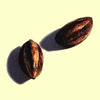
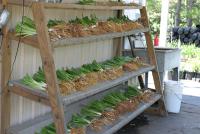
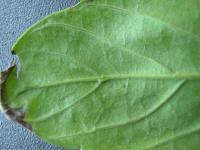
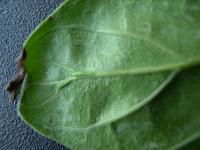
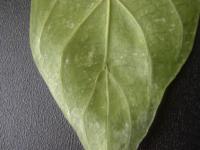
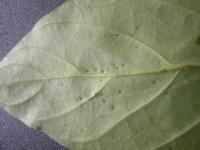
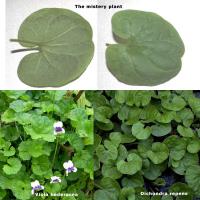
Two Dead in Piranha Penis Frenzy
in Chill Space
Posted
Sorry for posting such an old news. Some of you might have heard it before but I'll post it anyway.
========================
Two dead in piranha penis frenzy
Source: Herald Sun (Au)
Published: July 6, 2001 Author: AAP
========================
TWO Papua New Guinea fishermen have bled to death after having their penises bitten off by pirahna-like river fish.
The fish, which zero in on urine streams in the water, have struck terror among villagers along the Sepik River, in northwestern PNG.
Authorities believe the killer fish is an introduced member of the South American pacu family and a relative of the piranha.
In both of last month's fatalities, the fish demonstrated a trait of the piranha by following a trail of urine in the water, swimming to its source and then biting it off with razor-sharp teeth.
Some believe the killer may be a food-source fish introduced from Brazil in 1994 by the United Nations Food and Agricultural Organisation (FAO) and the PNG National Fisheries Authority (NFO).
However marine biologist and aquaculturist Ian Middleton said he believed they were a different species, introduced from across the PNG-Indonesia border.
He denied the fish were the descendants of the pacu species introduced to the Sepik River in 1994 and the Ramu River at Madang in 1997 by the FAO and the NFA as a protein substitute.
"The killer fish have the most human-like teeth on the bottom jaw I have ever seen and quite possibly feed on insects," he said.
Middleton said the FAO/NFA-introduced pacu grew to 20 kilos and had no teeth.
Pacu are mainly vegetarian but will adapt to eat almost anything.
Middleton said he believed the killer fish had started biting humans because of a lack of naturally occurring food.
"The reason for biting people on their genitals I believe is a result of the fish detecting a chemical change in the water, swimming up the urine trail and biting the genitals."
Middleton said this behaviour was well-documented in the Amazon, where other species of the piranha family attack in response to urine or blood.
He said people along the Ramu River were now harvesting the introduced pacu and there had been no reports of attacks on humans.
"I do not believe that in over five years of research and careful consideration that the FAO and the NFA would be stupid enough to introduce such a hazardous species, nor any relative of the piranha," Middleton said.
However the Director of the PNG Office of Environment and Conservation, Dr Wari Iamo, yesterday expressed "grave concern and dissatisfaction" at the way some government agencies and donor organisations had gone about importing exotic plant and animal species.
"A classic example is the salvinia molesta (a floating water weed) control program in the Sepik during the 1980s which cost millions of kina (dollars) because someone accidentally introduced the weed into the river system," he said.
"In the last two decades various agencies and individuals have introduced over 30 species of exotic fishes into the country."
http://www.freerepublic.com/focus/f-news/1652826/posts